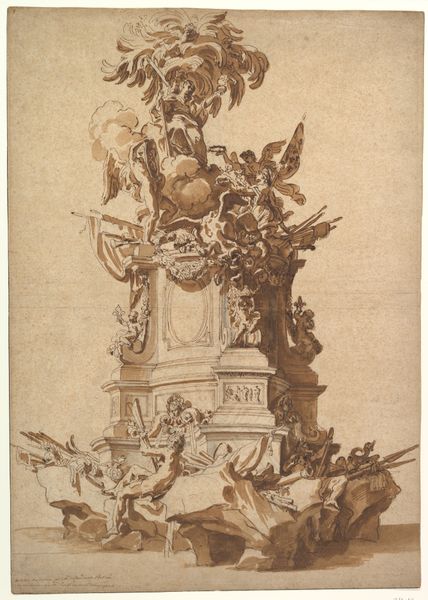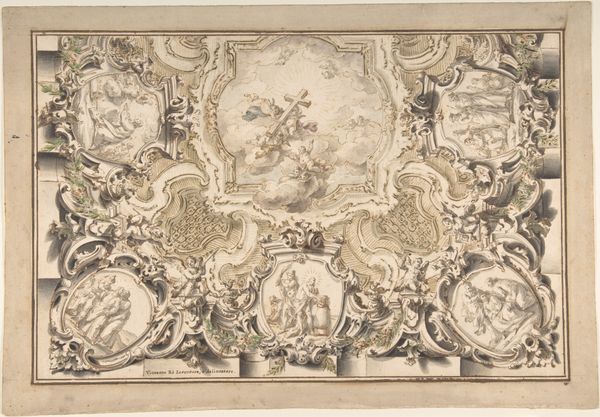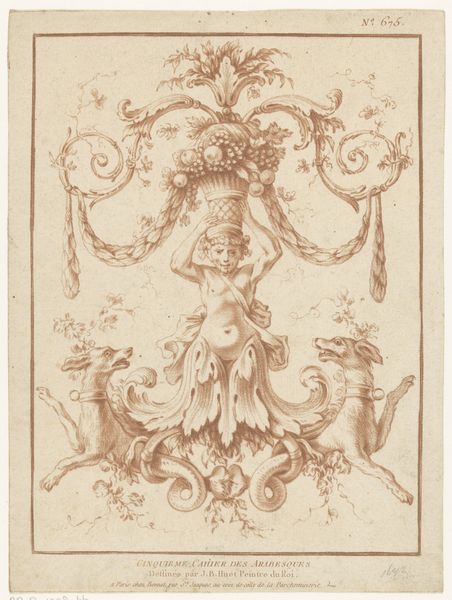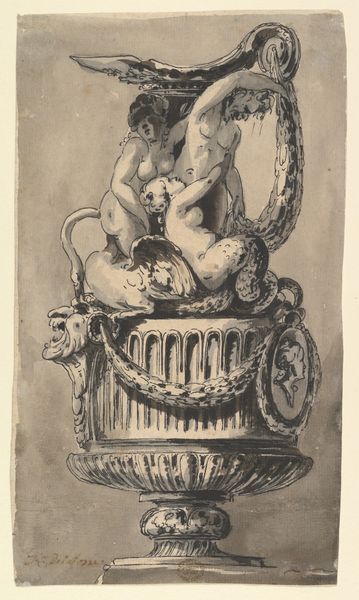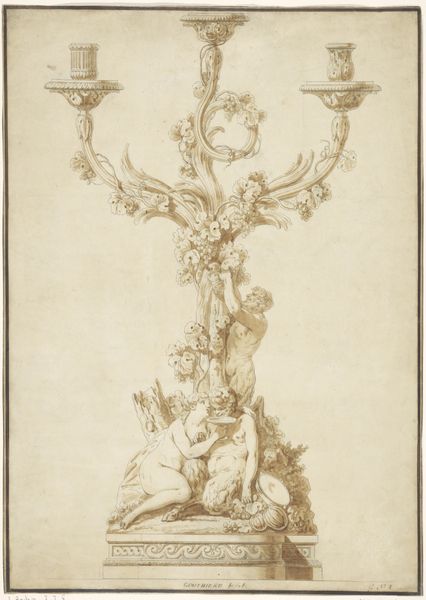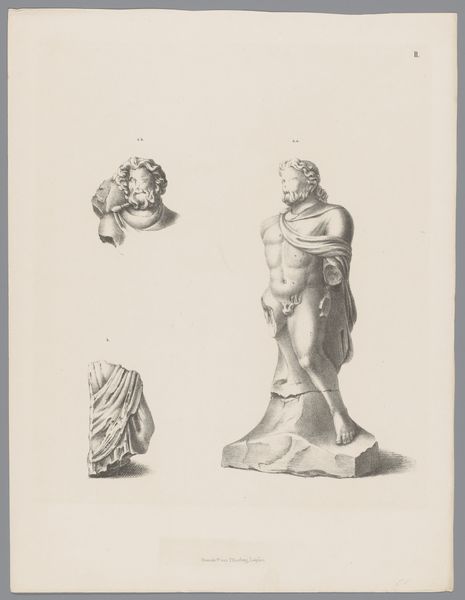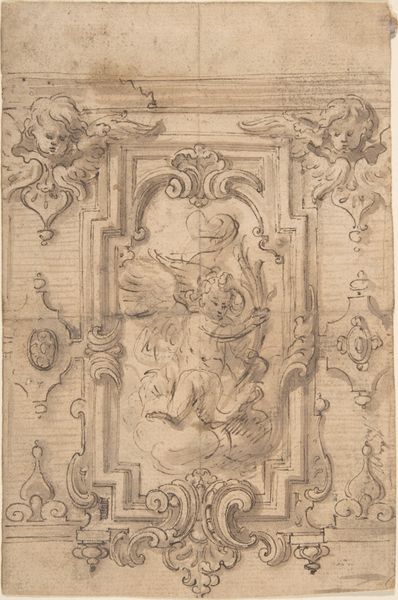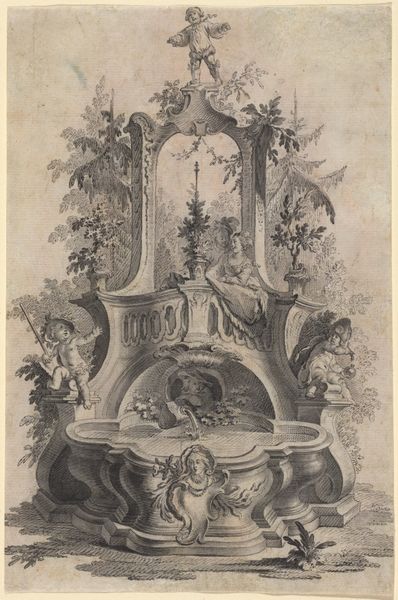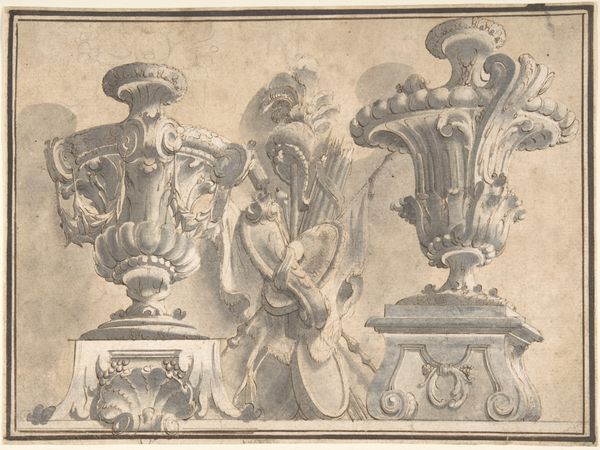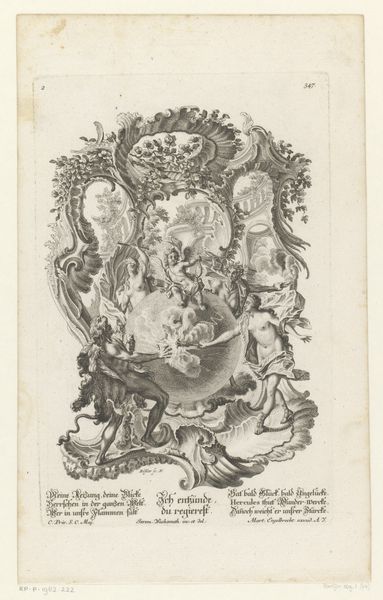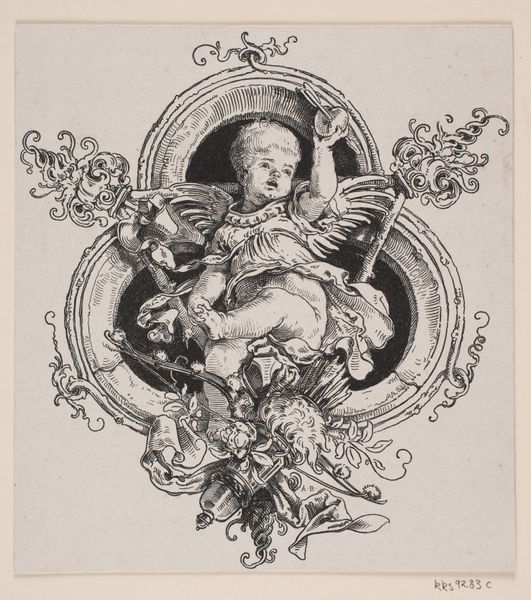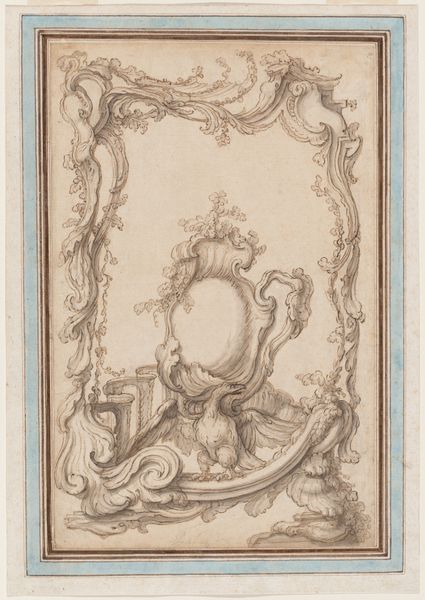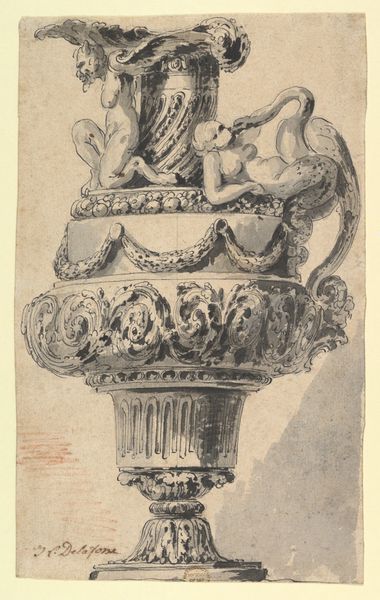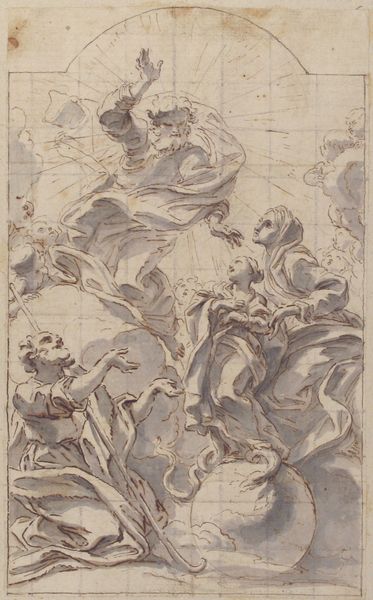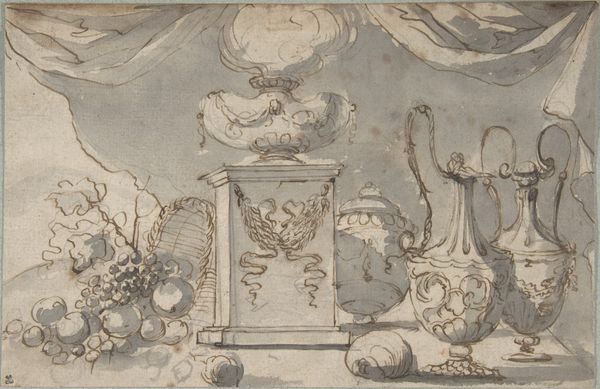
Candelabrum (one of a pair) 18th century
0:00
0:00
ceramic, porcelain, sculpture
#
portrait
#
ceramic
#
porcelain
#
figuration
#
child
#
sculpture
#
decorative-art
#
miniature
#
rococo
Dimensions: Height: 10 3/8 in. (26.4 cm)
Copyright: Public Domain
Curator: It strikes me immediately as ornate; there's an almost saccharine quality with the flowers and the putto figure, and the swirling gold accents give it a very elaborate Rococo sensibility. Editor: Indeed. What we are observing is a porcelain candelabrum, actually one of a pair, crafted by the Chelsea Porcelain Manufactory in the 18th century. The factory had quite a reputation for high quality work among aristocratic clientele. We see pieces like this on display right here at the Metropolitan Museum of Art. Curator: Given the prevalence of such ornate decorative objects in aristocratic settings, it raises questions about the construction of identities and power dynamics in the eighteenth century, particularly surrounding children. This cherubic figure, laden with flowers, almost serves as a symbolic stand-in, reflecting idealised notions of innocence and beauty during a period defined by strict social expectations. Editor: That's a wonderful perspective. Considering the art market's reliance on aristocratic patronage, this object represents both artistry and the political forces shaping the perception of idealised domesticity. Its miniature size and fine details, would also demonstrate the owner's wealth, confirming a particular type of access to cultural production. Curator: Exactly! What seems quaint at first glance contains subtle social cues about wealth, privilege, and the expected performance of family values, all encapsulated within this miniature decorative object. Editor: Yes, the choice of porcelain itself, as a prized material during that time, reflects how status was not only about owning possessions but demonstrating connoisseurship through collecting culturally desirable things. How would you say all these layers translate into today’s setting, observing it in a museum? Curator: I find its delicate and deliberate ornamentation an opportunity to confront and reimagine historical beauty ideals, providing a means of recontextualizing our understanding of identity formation within different periods. It reminds us how power is intertwined with even the most beautiful things. Editor: For me, considering it’s here in the Met helps one reflect on the continuous reframing of art historical canons in society and how objects are presented and made public. Curator: Definitely a space to consider how the past reverberates into the present.
Comments
No comments
Be the first to comment and join the conversation on the ultimate creative platform.
